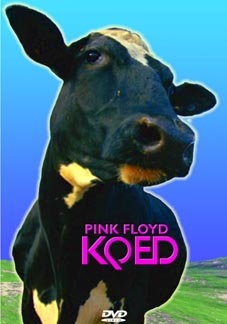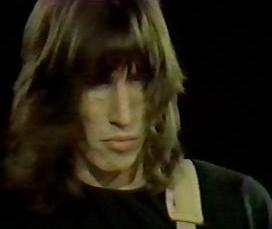


No, this is no bad dream
The Worst Floyd RoIOs
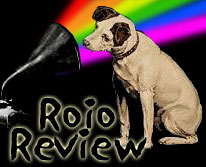
This issue was supposed to have the Worst RoIO review. (You might say, however, that the worst RoIO Review was last issue, when we didn't have one at all.) So this issue we will have a look at the worst Pink Floyd (and related) RoIOs that are out there.
I guess one could say that the worst RoIOs are the ones you should avoid buying, but in this day and age, you should avoid paying money for any RoIO. Check out the online trading community, and through there you should be able to download all the RoIOs you want without paying money (and instead, use the money to support the bands you like). Or even better--trade, and make trading friends, and accumulate a huge collection. Okay. So much for the rant.
So what makes a RoIO a bad RoIO?
There is one school of thought that says that a bad RoIO is a RoIO that
sounds bad, or covers a performance that is bad.
I disagree with that.
Even a really shitty sounding recording of a really badly performed concert can be an excellent RoIO and a treasure worth keeping.
(The Syd Barrett Corn Exchange tapes would be such a RoIO, if it existed.)
So what does make a RoIO a bad RoIO?
- Wrong information
- Wrong or irrelevant artwork
- Using a severely degraded source if better sources exist (or simply using inferior sources)
and the number one bad thing
- Repackaging official or really common material as rare
Wrong Information:
This one is easy. It can range from misspelled names (Dave Gilmore), misspelled track names, wrong track names ("Hey Teacher") to complete fabrications. Some of these fabrications have entered Floydian lore (e.g. the song title "Libest Spacement Monitor") and may make the RoIO that created them something of a collectible.
Wrong or Irrelevant Artwork:
We've seen them all. A 1994 tour RoIO with a Wall-era Roger Waters on the cover. A 1975 show with a beautiful digipack, showing images clearly taken from the 1977 Animals tour. Pictures of Syd on shows from the 70s.
Using Inferior Sources:
This is a bit harder to blame, because the better sources are not always known, but sometimes it is clear upon listening to the show that there must have been better tapes in circulation. (A modern day variation of this is using a (low bit-rate) mp3 source converted back to .wav files and burned to CDR.)
Repackaging Official or Common Material as Rare:
This is the major no-no. Repackaging official material is relatively rare (as there isn't that much official live Floyd ), but there have been roughly 25-million different versions of the BBC sessions (mostly the 1970 and 1971 sessions) repackaged (usually incomplete) as being some live show or another.
So, you ask, how do I avoid getting a bad RoIO?
Well, first off, if you are trading, ask the trader's opinion of the RoIO. If trading through the online networks, check the chatrooms and ask around. Thirdly, there is the excellent Pink Floyd RoIO Database, which has more information about more RoIOs than you can shake a stick at. (Note: The database was compiled in the not-so-distance past, when CDR trading was much less common, and it only really aims to gather info about vinyl and pressed-CD RoIOs. It hasn't been updated with the many, many homebaked CDRs RoIOs that are become so prevalent in the last few years.)
So which RoIOs are really bad?
What follows is more or less my personal run-down of avoid-at-all-costs RoIOs. There are undoubtably many, many, many more out there that aren't listed, but the below are some serious clunkers.
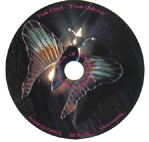 From Oblivion |
1. From Oblivion
Okay, this is nowhere near a bad RoIO. The only reason it is listed here is that I'm still pissed about the extra tracks not being listed as such, and I had been fooled into believing that this was finally the complete thing.
Beautifully packaged RoIO, in triangular (pyramid) shaped velvety package. CDs are picture disks. This would have been an excelent repackaging of the 11oct1971 San Diego show (a show that has a special place in my heart) if it wasn't for the fact that it has a bunch of extra (bonus) tracks from other source, which are unfortunately not listed as such.
 Atom Heart Moo Live |
2. Atom Heart Moo Live
This scores 3 out of 4 on the badness scale:
- Wrong information: The show is listed as 8mar70 Birmingham, but is actually the 20mar70 Lund, Sweden show
- Inferior Source: I don't know what they did with the Lund source to create this crap. Some sort of noise reduction gone bad I guess. It's almost totally unlistenable except for maybe 2 tracks (among which is "Interstellar Overdrive")
- Repackaging of Common Material: The Lund show that is readily available and quite common.
3. Wavelengths
- Inferior source: The opening track is "Let's Roll Another One", but sounds so awful that it could have been anything.
- Wrong information: Side 2 claims to have 3 Floyd tunes (Portrait Jaacov Agam and Surrealism I and II) that most certianly are not. These tracks are (parts of) a soundtrack made for a TV documentary series about modern art, and had used some Floyd incidentals (a bit of "One of These Days" and "On the Run" if memory serves me correctly) and the TV series had listed Pink Floyd in the credits, which may explained the RoIOers' confusion. For a while, however, there was some serious speculation that these tracks were the long lost household objects
4. Various Japanese Digipack reissues
I cannot remember exactly which shows these were, but in the early 90s a series of Japanese RoIO reissues was being sold in specialty shops and record fairs. The RoIOs were beautifully packaged digipacks which folded out to all four sides and included a single disk (I cannot remember if it was a picture disk or not).
- Wrong (or incomplete) Information: Many shows simply listed only the songs performed, occasionally including a year
- Irrelevant Artwork: The only relevance of the artwork to the actual performance is that the artwork did depict Pink Floyd, and mostly they had pictures from the same decade. But that was about it.
- Repackaging of Common Material: None of these had any new material, and I think one of them was simply a one disk version of a two-disk show.
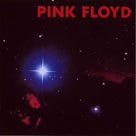 Music For Architectural Students |
5. Music For Architectural Students
At the time of its release this might have been a nice release. It has now been surpassed both in scope as well as in quality by many fanmade RoIOs (In The Studio comes to mind).
- Inferior Source: The sound quality varies a lot and sounded rather bad, even back in 1990. Much better sources of all recordings have since been found.
- Wrong Information: It claims track 11 is from The Committee while in reality it's a snippet from a BBC TV program where they show the Floyd in the studio overdubbing a bit of More.
- Repackaging of Common Material: It's a repackaging of some BBC sessions from 1967-69, a bit of Omnibus TV, and one French TV snippet.
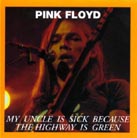 My Uncle is Sick Because the Highway is Green |
6. My Uncle is Sick Because the Highway is Green
The only good thing about this one is that title. Around the time of its release this recording was widely and vehemently abused by Floyd fans.
- Repackaging of Common Material: It's yet another repackaging of some BBC stuff.
- Wrong Information: The record claims to be the 3/8/67 Wolverhampton show (which, according to Povey and Russell's In the Flesh book never occurred) but the real date and venue are unknown.
- Irrelevant Artwork: The cover features a 1974-era picture of Dave Gilmour for what purports to be a 1967 Floyd show.
Remember When You Were Young A relatively new trader rates the worst bootlegs in his collection Gerhard, the interpid RoIO Reviewer, like many Floyd fans, has been collecting Floyd live recordings for years and years, and has heard hundreds of them. I have only been collecting bootlegs for five years now, and my collection has only recently surpassed 50 items. There are some good recordings, and some bad recordings. Below are my thoughts on a few of the worst. (Keep in mind that what I think are "bad" recordings can actually be good or "satisfactory" to others. So this list is simply my opinions; take them with a grain of salt. Listen for yourself, and make up your own mind.) Roger Waters: 2002 Japan Tour Volume 5 This recording is all right but not as great in quality as other recordings from the In The Flesh - 2002 tour. I felt this particular show was recorded with minidisc equipment as the bass level was extremely low, and then the final copy was saved in mp3 format as loud pops were evident. This show is not really recommended unless you are a completist collector of this tour. Roger Waters: Sao Paulo 2002 This is another not-so-great recording from the same tour. Whereas the Japanese show above suffered from too little bass, here the bass level is so strong that my speakers have the tendency to pop from time to time. I felt the sound quality was muffled and barely audible at some times. Pink Floyd: P3 I liked the idea that all songs performed during Pink Floyd's 1994 Division Bell world tour not featured on the official Pulse live CD would be included on the P3 compilation. However, the final editing of P3 included making the sound levels constantly changing from song to song (the sound level should have been normalized to make listening a lot easier on the ears) and making all songs quite bassy. Not only that, but the format was saved in mp3, which is a big no-no when circulating shows. It should instead be saved in wave (.wav) or Shorten (.shn) formats which are lossless, while mp3 is lossy. Back in 1998, when this disc was put together, the producers didn't know anything about proper formats, especially since the Shorten (.shn) format didn't exist then! They meant well, trying to produce this fine compilation but they were in the beginning of the digital audio editing era. I had received this bootleg in a trade a few years ago and the mp3 files sounded as if they were re-compressed many times, therefore, making the disc sound very bassy. Keep in mind that this perhaps is the trader's fault, not the producers'. Pink Floyd: Soersfestival In Aachen This recording is not only awful, but it isn't complete! One could say that this is a bad recording because it was recorded in 1970 as a lot of good recording equipment didn't really exist then. I will disagree with that statement because there are plenty of good bootlegs from that year (The Electric Factory, September 26, 1970 at The Electric Factory in Philadelphia, Pennsylvania, for example). This boot starts out around the third minute of "Astronomy Domine" and ends by cutting out the ending of "Interstellar Overdrive". The equipment hiss and hum is extremely loud and cannot be removed without jeopardizing the overall quality. There are a lot of pops and glitches throughout the entire recording. I would refrain from getting this boot, unless there are no better and complete versions of this show out there. Pink Floyd: The Alamodome San Antonio Texas (T-1334) I know a lot of people will disagree with me on this, but I think this is the worst show I have in my entire collection! It may be complete but the sound quality is so awful and muffled that I cannot hear the vocals and guitar solos! You would have to be a Division Bell tour fanatic to be able to recognize the songs and solos. I had traded for this show by a private online FTP server that took about three days for me to download it. I will tell you that this trade and download process was a complete waste of time. After listening to the show with my head shaking, I decided not to burn this show onto CDs and simply decided to delete it off my computer! There is another recording of the same concert called Forever And Ever. I had this boot five years ago until I accidentally destroyed the CDs while trying to label them. I actually believe the Forever And Ever version is many times better than this boot, although there were some pops evident. That could easily be fixed. Do yourself a favor and avoid this RoIO at all costs. It is awful and a complete waste of time.
The Camera Eye 'An Hour With Pink Floyd' at KQED The Bootleg DVD Review "The more things change, the more they stay the same." This is especially true when it comes to collecting bootleg recordings of your favorite artists. Like many fans, I have been changing formats over the years, from vinyl to 8-track tapes to cassette tapes to CD to VHS. And now a new format has taken over the collectors circles: the recordable DVD. With this change in formats fans are once again collecting performances we probably already own in one format or another, but with the advent of the recordable DVD collectors have a good reason to reacquire these shows in the exciting new format. In this column I will review various Pink Floyd and related DVDs that are available within collectors circles, and I hope to help you differentiate the good from the bad so that you can get a good start in collecting and trading DVDs. But first, for this inaugural column, I want to take some time to briefly explain the recordable DVD format and the competing standards. DVD stands for "Digital Versatile Disc" (not Digital Video Discs). The 'versatile' means that the format can accommodate different purposes--you can use them to store mass data up to 4.7 gigabytes, or you can use them for storing and playback of video. Typically the disc can handle up to 2 hours of high quality video, although with bitrate manipulation you can store less video with higher quality or more video with lesser quality. There are currently two main formats: DVD-R and DVD+R. The DVD-R format was introduced by the DVD Forum, a group of manufacturers mainly composed of Pioneer, Hitachi, Mitsubishi, Toshiba, and others. The first drive introduced was the Pioneer DVR-A03 (also called the "Superdrive") and was shipped beginning in 2002 in Mac computers and also sold individually for PC users. While at first this format had less compatibility with existing DVD players it quickly adapted and is now the dominant format in the recordable DVD market and is compatible with approximately 90-95% of all DVD players. The DVD+R format was introduced by the DVD Alliance, primarily made up of Sony, Phillips, and Ricoh. While this format offers some better features such as CLV (constant linear velocity) and CAV (constant angular velocity) writing, it only has compatibility with approximately 75-80% of all players. So while it seems we might have another VHS vs. Beta war all over again, the two groups have overcome their difference with the introduction of the new multiwriter drives which support both -R and +R which will ensure success for both formats. Recordable DVD technology is available both as computer drives and as stand-alone burner decks. While each has its niche and uses, most collectors and traders feel that the computer drive format is superior to the stand-alone deck. The computer drive allows much more versatility with the discs: with authoring software you can divide your program into chapters, add extra features such as alternate audio and video channels or subtitles, and add bonus "Easter eggs" (hidden tracks that can be found by navigating the disc). Stand-alone burners basically record video directly to the disc, which is less time consuming and labor intensive, but you often don't have the ability to properly chapter your program. Some of these decks will allow you to place chapter stops in 10-minute increments, but often that doesn't allow the user to go directly to certain areas of the disc such as the beginning of a scene or song. These units also are less flexible with recording rates, only offering XP or LP speeds, giving the user 1 or 2 hours per disc. Out in the collector circles you will often find traders not interested in stand alone discs, preferring computer-authored discs. With the price of recordable DVD drives and stand-alone decks bottoming out, there is no reason that you shouldn't own one and get in on the trading fun yourself. Current pricing for the Pioneer DVR-A06 dual format drive is around $150 or less, and stand-alone burners are well under the $500 range. The price of blank discs has fallen drastically over the past couple of years as well; when the format was first introduced the Pioneer DVD-R discs cost around $10 each, whereas now generic blanks can be purchased in bulk for less than a dollar apiece. Since this format is digital, you are making exact copies of the original and there is no generational loss as found in analog tape formats. The first copy looks every bit as good as the hundredth copy, allowing all collectors to have the very best in quality. But enough of the technical mumbo jumbo. There are plenty of online resources available if you are interested in more information. Now, let's get on to a review!
For this issue, we will look at the classic April 29, 1970 recording of "An Hour With Pink Floyd" at KQED studios in San Francisco. The good people at Harvested Records have presented a most outstanding DVD of this performance using 2 different sources. The program was rebroadcast on August 31, 1981, and a fantastic master VHS tape was cleaned up and used for the video, while a 3/4-inch station master tape was the audio source. The result is an incredibly clean version that sounds fantastic when run through a stereo (preferably at high volume!). Compared to the VHS copy that you might already have in your collection, watching this DVD is like looking at the show with a brand new set of eyes. The colors are very rich with minimal fade and bleeding. Flesh tones are a bit soft, but there is still plenty of detail. Blacks are solid and deep with little to no static pops. There are very few dropouts on the video which is amazing, considering that this was originally broadcast almost 34 years ago, rebroadcast 11 years later, and then has been shelved ever since. Throughout the performance the TV station utilized color effects and crossfades, which are very clean on this DVD; on VHS versions of this video it simply looked like color washout. We finally get the psychedelic effect that was originally intended rather than a perception of poor quality video. Without acquiring the studio master tapes I doubt that a better version of this show is available and it's a great place to start off your own collection of Pink Floyd bootleg DVDs. My only wish for this disc is that with the available time on the disc some bonus tracks could have been added, such as the 2 clips from the Stamping Ground movie which was recorded a few months after this KQED performance. There are also some rare 8mm film clips from 1971-72 that could have been included to fill up this DVD, but overall it still rates as a solid foundation to any Pink Floyd bootleg collection. In the next issue I'll be reviewing another bootleg DVD, so until then keep burning and "Shine On" you crazy bootleggers.
(March 31, 2002 at International Forum in Tokyo, Japan)
(March 14, 2002 at Pacaembu Stadium in Sao Paulo, Brazil)
(various songs from the 1994 Division Bell tour)
(July 12, 1970 at Soersfestival at Soerser Stadium in Aachen, West Germany)
(April 3, 1994 at Alamo Dome in San Antonio, Texas)
